
India is a federal union comprising 28 states and 8 union territories, for a total of 36 entities. The states and union territories are further subdivided into districts and smaller administrative divisions.
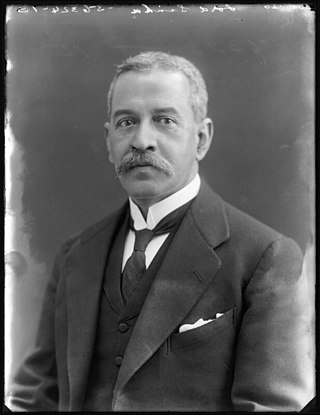
Satyendra Prasanna Sinha, 1st Baron Sinha, KCSI, PC, KC, was a prominent British Indian lawyer and statesman. He was the first Governor of Bihar and Orissa, first Indian Advocate-General of Bengal, first Indian to become a member of the Viceroy's Executive Council and the first Indian to become a member of the British ministry. He is sometimes also referred as Satyendra Prasanno Sinha or Satyendra Prasad Sinha.
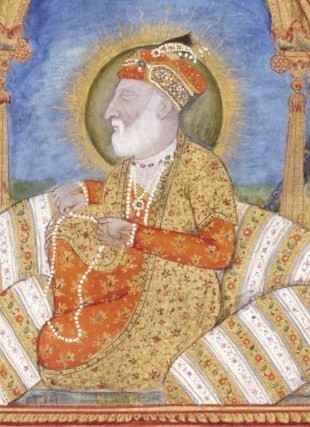
Shah Alam II, also known by his birth name Ali Gohar, or Ali Gauhar, was the seventeenth Mughal emperor and the son of Alamgir II. Shah Alam II became the emperor of a crumbling Mughal Empire. His power was so depleted during his reign that it led to a saying in the Persian language, Sultanat-e-Shah Alam, Az Dilli ta Palam, meaning, 'The empire of Shah Alam is from Delhi to Palam', Palam being a suburb of Delhi.
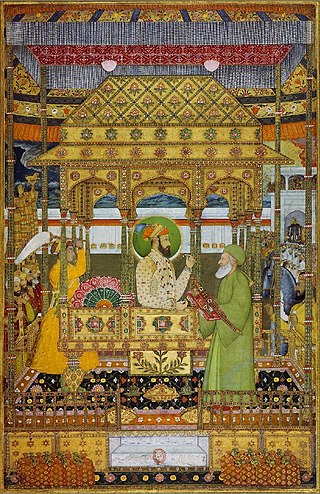
Mirza Azim-ush-Shan was the second son of Mughal emperor Shah Alam I, by his second wife, Amrita Bai, Princess of Kishangarh. He was the grandson of Emperor Aurangzeb, during whose reign, he was the subahdar (viceroy) of Bengal Subah, Bihar Subah and Orissa Subah from 1697 to his death in 1712, and the great grandson of Emperor Shah Jahan.

Patna, the capital of Bihar state, India, is one of the oldest continuously inhabited places in the world and the history of Patna spans at least three millennia. Patna has the distinction of being associated with the two most ancient religions of the world, namely, Buddhism and Jainism. The ancient city of Pataliputra was the capital of the Mauryan, Shunga, and Gupta Empires.

The Nawab of Bengal was the hereditary ruler of Bengal Subah in Mughal India. In the early 18th-century, the Nawab of Bengal was the de facto independent ruler of the three regions of Bengal, Bihar and Orissa which constitute the modern-day sovereign country of Bangladesh and the Indian states of West Bengal, Bihar and Odisha. They are often referred to as the Nawab of Bengal, Bihar and Orissa. The Nawabs were based in Murshidabad which was centrally located within Bengal, Bihar, and Odisha. Their chief, a former prime minister, became the first Nawab. The Nawabs continued to issue coins in the name of the Mughal Emperor, but for all practical purposes, the Nawabs governed as independent monarchs. Bengal continued to contribute the largest share of funds to the imperial treasury in Delhi. The Nawabs, backed by bankers such as the Jagat Seth, became the financial backbone of the Mughal court. During the 18th century, the Nawabs of Bengal were among the wealthiest rulers in the world.

The Eastern States Agency was an agency or grouping of princely states in eastern India, during the latter years of the Indian Empire. It was created in 1933, by the unification of the former Chhattisgarh States Agency and the Orissa States Agency; the agencies remained intact within the grouping. In 1936, the Bengal States Agency was added.

The provinces of India, earlier presidencies of India and still earlier, presidency towns, were the administrative divisions of British governance on the Indian subcontinent. Collectively, they were called British India. In one form or another, they existed between 1612 and 1947, conventionally divided into three historical periods:

Chota Nagpur Division, also known as the South-West Frontier, was an administrative division of British India. It included most of the present-day state of Jharkhand as well as adjacent portions of West Bengal, Orissa, and Chhattisgarh.
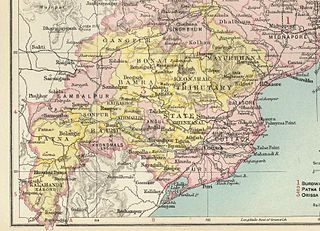
The Orissa Tributary States, also known as the Garhjats and as the Orissa Feudatory States, were a group of princely states of British India now part of the present-day Indian state of Odisha.
Sinha is a Sanskrit term and surname which originates in the Indian subcontinent. The surname is commonly used by the Kayasthas, typically the Bengali Kayasthas and the Kayasthas of Bihar and Jharkhand and is common in India, Sri Lanka, and Bangladesh. It comes from a Sanskrit word meaning "lion" or "brave person".
Bihar is a state located in the eastern part of India.

Bihar Legislative Council also known as Bihar Vidhan Parishad is the upper house of the bicameral Bihar Legislature of the state of Bihar in India.

The Council of State was the upper house of the legislature for British India created by the Government of India Act 1919 from the old Imperial Legislative Council, implementing the Montagu–Chelmsford Reforms. The Central Legislative Assembly was the lower house.
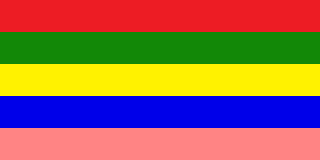
Saraikela State also spelt Seraikela, Saraikella or Seraikella, was a princely state in India during the era of the British Raj, in the region that is now the Jharkhand state. Its capital was at Saraikela.

The Bengal Subah, also referred to as Mughal Bengal, was the largest subdivision of Mughal India encompassing much of the Bengal region, which includes modern-day Bangladesh and the Indian state of West Bengal, and some regions from the Indian states of Bihar, Jharkhand, Odisha between the 16th and 18th centuries. The state was established following the dissolution of the Bengal Sultanate, a major trading nation in the world, when the region was absorbed into the Mughal Empire. Bengal was the wealthiest region in the Indian subcontinent.
Sir Edward Albert Gait (1863–1950) was an administrator in the Indian Civil Service who rose to serve as Lieutenant-Governor of the Bihar and Orissa Province in the Bengal Presidency of British India. He held that office for the years 1915–1920, with a brief absence during April–July 1918 when Edward Vere Levinge officially acted in the position.

Bihar Province was a province of British India, created in 1936 by the partition of the Bihar and Orissa Province.

Kharsawan State, also spelt Kharsua or kharaswan, (Odia:ଖରସୁଆଁ)was a princely state in India during the era of the British Raj. The state had a privy purse of 33,000 Rs.It was one of the Odia Princely states of India during the period of the British Raj and the major language spoken in the area is Odia.

















